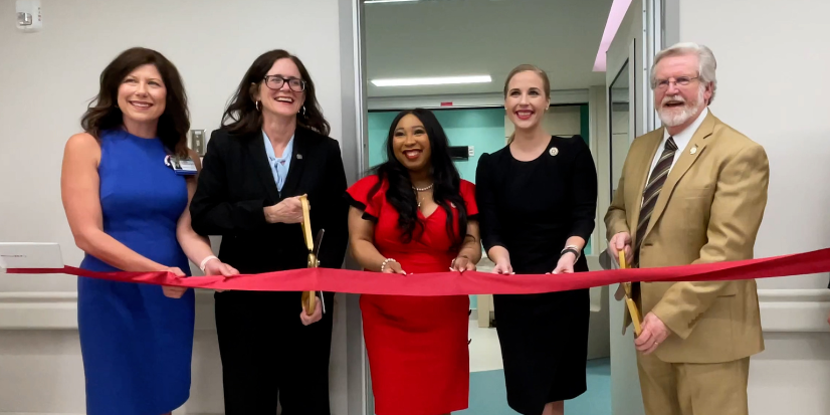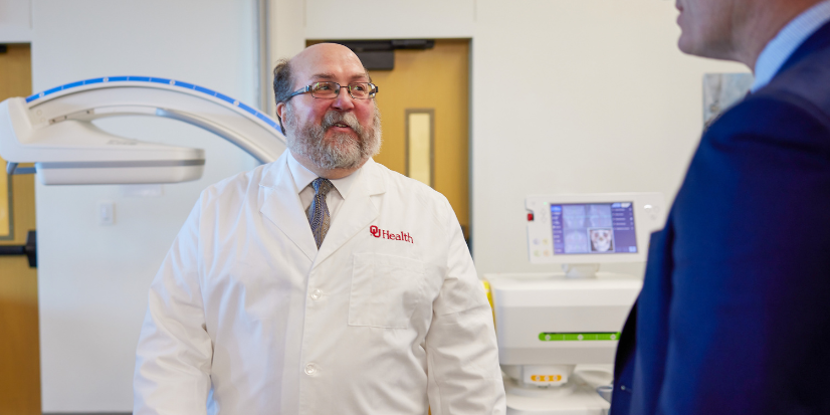Stephenson Cancer Center Investigators Apply Cancer Research Tools to Help Unravel Alzheimer’s Disease
- Category: News, Adults Services
- Posted On:
Stephenson Cancer Center investigators at the University of Oklahoma Health Sciences Center are utilizing cancer research methods and tools to advance the understanding of Alzheimer’s disease. Results of these efforts have been published in Aging Cell, a highly regarded journal in the field of aging research.
“In 2015, my mother was diagnosed with Alzheimer’s disease,” said Dr. Hiroshi Yamada, the lead author for the study. “As I started to learn about the current status of Alzheimer’s disease studies and clinical practice, I was surprised to learn that over 98 percent of about 400 Alzheimer’s drug candidates tested in clinical trials have failed.”
There is no current cure for Alzheimer’s disease, which is a leading cause of cognitive impairment and death among people aged 65 and older. Existing drugs can help neuronal function and delay progress, but they do not address the root cause of the disease. The Alzheimer’s Association estimates that 64,000 Oklahomans age 65 or older live with Alzheimer’s dementia – a number projected to increase to 76,000 by 2025.
Yamada, a cancer researcher by training, learned that genomic instability, his specialty, was potentially involved in Alzheimer’s disease. His cancer-focused work has looked at the effects of genomic instability, or the high frequency of genetic mutations, within the body. His research specifically focuses on how genomic instability causes molecular changes, influences biochemical and immune defense systems against cancer, and eventually causes proneness to certain types of cancers.
Yamada decided to investigate whether genomic instability has a role in causing or facilitating Alzheimer’s disease. To test this hypothesis, he utilized preclinical models of genomic instability developed for cancer research.
One of his experimental models showed spontaneous accumulation of amyloid-beta, a protein known to contribute to Alzheimer’s onset and progression, at old age. This was different from existing studies for Alzheimer’s disease, which have been based on early-onset models, depending on forcible expression of amyloid metabolism component(s) in the brain. These existing models will develop amyloid-beta plaques and other pathological features, but whether they recapitulate molecular events involved in spontaneous, late-onset Alzheimer’s disease, which is over 95 percent of cases, is questionable.
Much of Alzheimer’s disease drug development has been based on an assumption that drugs that work on early-onset Alzheimer’s disease will work on late-onset Alzheimer’s disease. With many costly failures in clinical trials, some pharmaceutical companies have withdrawn from Alzheimer’s disease drug development, despite the unmet clinical need. Some speculate that the high failure rate in clinical trials may be partially attributed to current drug test models that may not properly represent some aspects of spontaneous, late-onset Alzheimer’s disease.
Dr. Yamada’s insights point to a link between chromosome instability and the development of Alzheimer’s disease. His new model, focused on old age, is thought to be the first genetically defined model for spontaneous late-onset Alzheimer’s disease. This will be a useful tool with which to test Alzheimer’s disease drug candidates, as well as to find biomarkers for Alzheimer’s disease risk assessment or diagnosis.
Yamada’s research group is now hypothesizing that certain classes of cancer drug may be able to interfere with amyloid-beta accumulation. They are in the process of proposing tests. If the “drug repurposing” approach proves effective, the drug could potentially be available to clinics in 3-7 years, instead of the normal 15-20 years that it takes to develop a drug from scratch.
“Once an effective drug for a difficult disease is discovered, medical practice will change,” said Yamada. “We are hopeful that our study will lead the charge for Alzheimer’s disease treatment in clinics.”
In addition to Yamada, Stephenson Cancer Center members involved in the study include Dr. Chinthalapally V. Rao, leader of the cancer center’s Experimental Medicine and Developmental Therapeutics Program, and Dr. Adam Asch, Stephenson Cancer Center Deputy Director and Section Chief for Hematology / Oncology at the OU College of Medicine.



